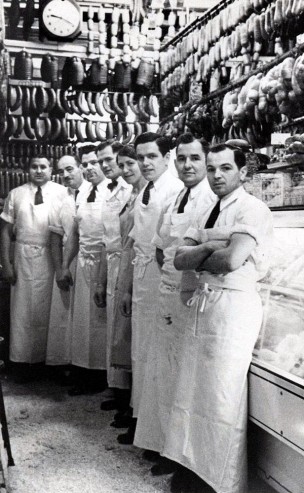
Schaller & Weber
For the German Charcuterie
PREV
Ferdinand Schaller began his career in 1918 as an apprentice butcher and sausage maker in Stuttgart, Germany. After five years, he began looking for opportunities to expand his knowledge and talents, and traveled throughout his homeland for another five years, learning his craft at the sides of masters. Their techniques. Their recipes. Their dedication. All of which he would take with him across the Atlantic Ocean when he signed up in Hamburg for a cook’s mate position on a ship bound for America.
By the time he arrived in New York in 1927, Schaller was no longer an apprentice. He was a master charcuterier so treasured by his shipmates for his cured meats and sausages that he was barely allowed off the ship. This was a sign of things to come when, a decade later, he met a similarly gifted and ambitious man named Tony Weber. Together, they formed Schaller & Weber an opened shop in Yorkville on the Upper East Side of Manhattan. Soon, their European-style sausages and deli meats were being enjoyed by aficionados throughout New York City, across the United States and around the world.
In fact, Schaller & Weber is the first and only American sausage and meat producer to repeatedly win gold medals of honor at international exhibitions in Holland and Germany. In 2000, Schaller & Weber entered twenty different products at Austria’s Wesler Volksfest and won fourteen gold and six silver medals—and the fair’s most prestigious international award, another first for an American chacuterier.
Almost a century after opening its doors, Schaller & Weber is still a family-run business. And still dedicated to producing the same premium meats—according to the same exacting standards and time-honored recipes—that originated in long forgotten butcher shops. To eat any Schaller & Weber product today is to experience something increasingly rare in this world—the tradition of taste.
Schaller & Weber
11105 NEW YORK